8.6 /10 1 Votes8.6
7.6/10 FreeROMS Initial release date 7 August 1987 | 4.8/5 eBay Mode(s) Single-player Developer Square Publishers Nintendo, Square, Mattel | |||||||||||||||||||||||||||||||||
 | ||||||||||||||||||||||||||||||||||
Similar Square games, Racing video games | ||||||||||||||||||||||||||||||||||
Rad racer nes 1987 video game years history
Rad Racer, originally released in Japan as Highway Star (ハイウェイスター, Haiuei Sutā), is a racing game developed and published by Square for the Family Computer in 1987. In this game, players drive a Ferrari 328 or an F1 racing machine through a race course.
Contents
- Rad racer nes 1987 video game years history
- Classic game room rad racer ii review for nes
- Gameplay
- Development
- Reception
- Legacy
- References
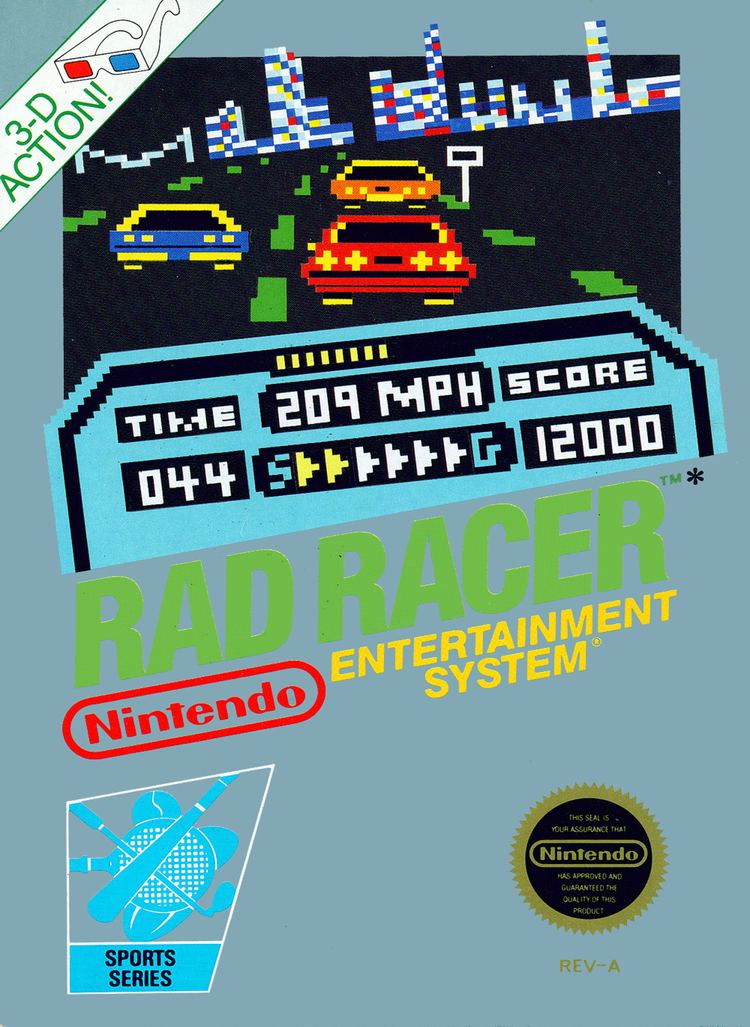
The game was released for the Nintendo Entertainment System in North America and Europe months after its debut on Family Computer. The game was part of an attempt by Square to make 3-D games, and was followed by several other games using the same technology.
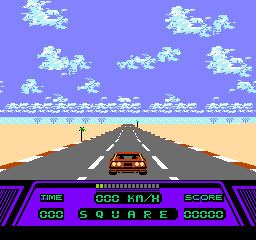
The game sold over half a million copies, and is considered one of the best racing games on the NES, but was also criticized as being derivative of other racing games from the period.
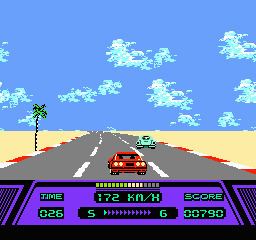
Classic game room rad racer ii review for nes
Gameplay
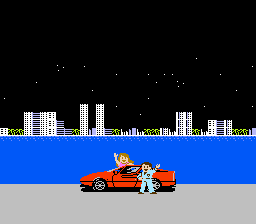
Players can choose between two types of car to race; either a 328 Twin Turbo or an F1 machine. Rad Racer players can activate a 3D mode during play by pressing the "Select" button and wearing 3D glasses. Players could also use the Power Glove to control their vehicle.
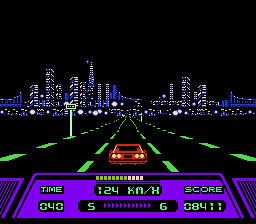
The idea of Rad Racer is to rally through a course and its checkpoints before the timer expires. The player's car crashes if it collides with a road sign or tree at any speed. Cars hit from behind slow down and cars hit from the side are jettisoned in that direction. Crashes take time and make it more difficult for the player to reach the check point. There are eight different levels of increasing skill. Even if time runs out, the vehicle can continue to coast for a while; if the vehicle reaches a checkpoint before running out of momentum, the game continues. If time runs out and the car fails to coast through a goal before coming to a stop, the game is over. The game came packaged with 3D glasses which could be worn to give the player the illusion of three dimensions (Square had previously incorporated the usage of 3D glasses in 3-D WorldRunner). At the car selection screen, the player can pick one of two cars: a Ferrari 328 or an F1 racing machine, similar in appearance to the 1987 Camel-sponsored Honda/Lotus 99T Formula One car. Although officially there is supposedly no performance gain by choosing the F1 racing machine over the Ferrari 328, this is debated by race fans. Both cars have a maximum speed of 255 km/h (255 is the highest integer representable within 8 bits). In-game, "turbo" can be activated by pressing the up button to boost the car's speed (but only after the car gets to 100 km/h), and disengaged at any time by releasing the button. Pushing down on the joypad can also allow the player to select between three types of background music or none at all.
Development
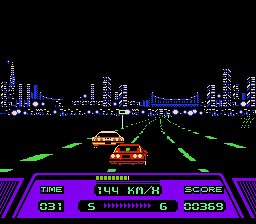
The main reason for the development of the game was that Square owner Masafumi Miyamoto wanted to demonstrate Gebelli's 3D programming techniques.
It was programmed by Nasir Gebelli, designed and supervised by Hironobu Sakaguchi, and featured music by Nobuo Uematsu, all of whom later contributed to Final Fantasy in similar roles. In 1987, few racing games existed for the NES, and Rad Racer was seen as Square's answer to Sega's Out Run. In Japan, it is one of the few titles for the system designed for use with Nintendo's Famicom 3D System peripheral for 3D experience. In 1990, Square followed up with an exclusive North American sequel, Rad Racer II. It differed little from the first version, and players considered the gameplay inferior; as a result, it was not as successful as the first version.
Reception
As one of the NES's premier racers, Rad Racer was met with favorable reviews and enjoyed commercial success; it ranked 8th on Nintendo Powers player's poll Top 30. In their article The History of Square, GameSpot conceded that "Rad Racer bears more than a passing resemblance to Out Run," but went on to say that "it's more than just a clone" and credited the game with "effectively convey[ing] the proper sense of speed." Though the 3D effect created some sense of depth to the gameplay, it was hindered by a pronounced screen flickering. The article concluded that the game "stands on its own as a fine racing game." According to Sakaguchi, Rad Racer and The 3-D Battles of WorldRunner sold "about 500,000 copies, which was fairly good."
Legacy
Despite the efforts of Square Co. to make unique games with 3D features such as Rad Racer and 3-D Worldrunner, and high sales, the company was in financial trouble. These events are what led to a final attempt at a breakout hit, Final Fantasy. Rad Racer was ranked number 57 on IGNs Top 100 Nintendo Entertainment System games, and was called "iconic" and one of the NES's premiere racing games . Rad Racer appeared in a scene in the movie The Wizard. Rad Racer II was released in 1990 .
